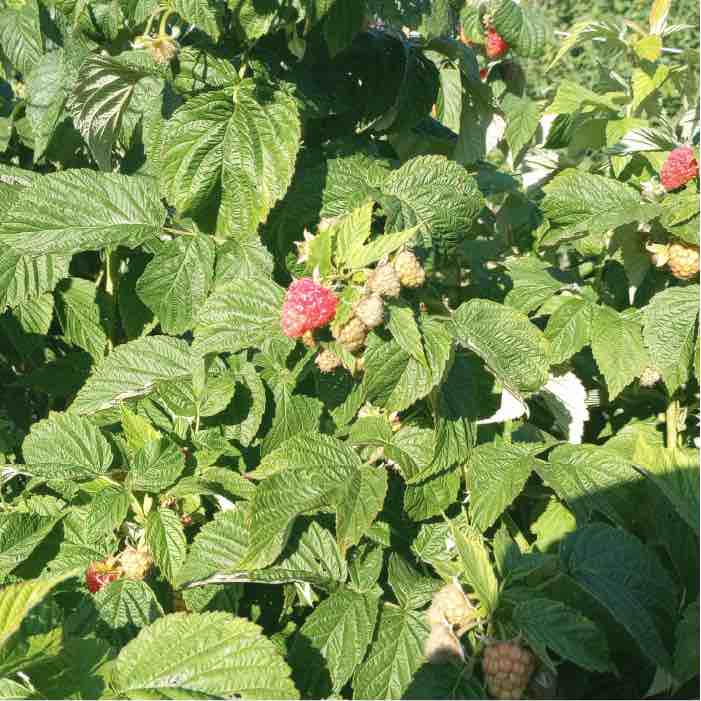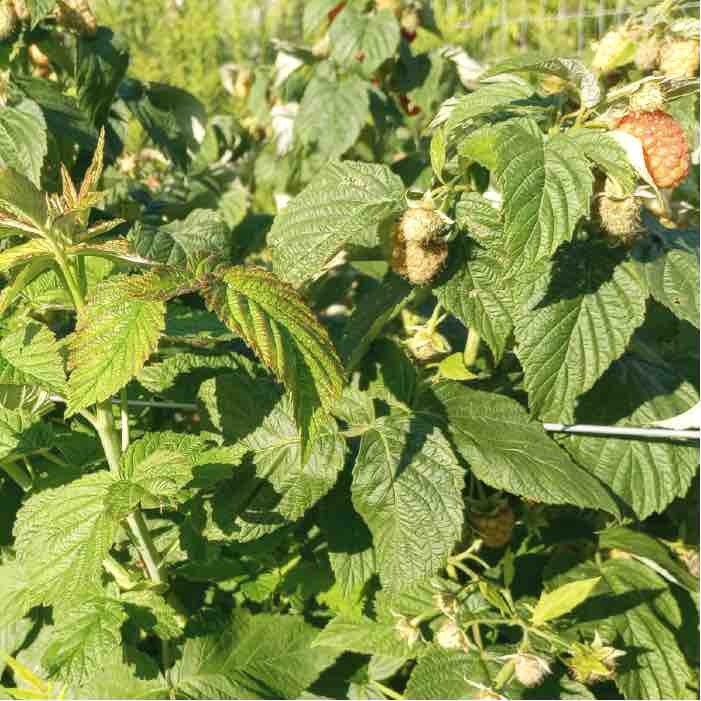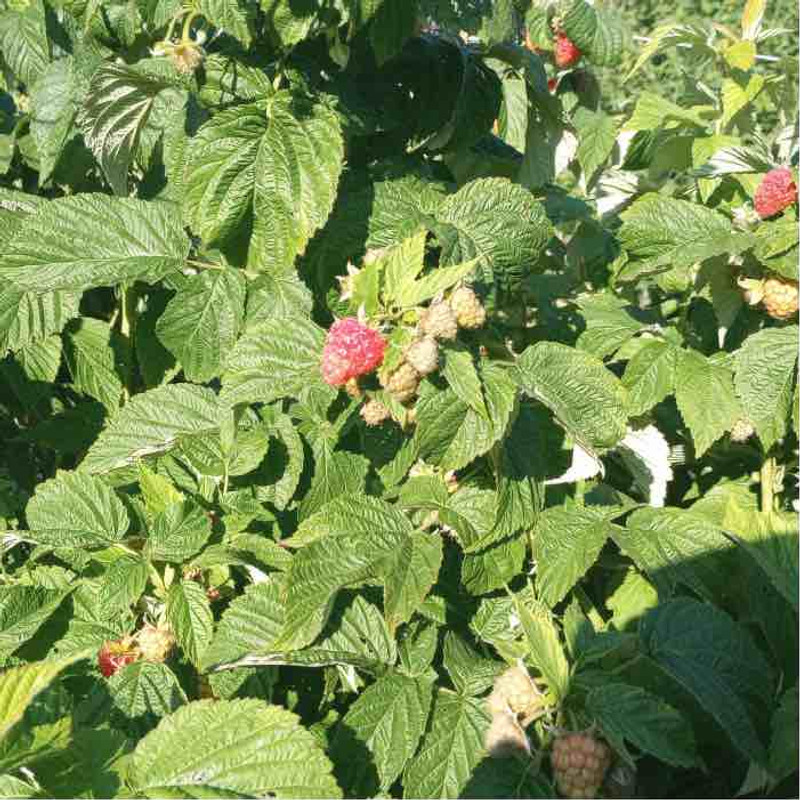This citizen science study aims to examine if Wine Cap (Stropharia rugoso-annulata) mycelium can help remediate raspberry plants infected with Phytophthora sp.
Project Background
Phytophthora, Greek for "plant destruction," is a soil-inhabiting pathogen that forms eukaryotic microorganisms known as oomycetes. The oomycetes of Phytophthora sp. produce spores that lie in wait for years until wet conditions in the soil provide a suitable host. Once the plant host arrives, in this case, raspberries, the resting Phytophthora spores germinate, producing motile (able to swim) spores that travel via water in the soil system, allowing the spores to reach and penetrate the host plant roots. Once a plant has become infected, it will appear drought-stressed, presenting with discolored leaves and wilt, typically declining after the first warm weather of the season. The best management practice currently in place is based on proper water management (avoiding prolonged saturation, soil compaction, and providing good drainage) and cutting away infected tissue.
Project Description
Located in agricultural zone 5b, Katya Lewis, noticed after a very wet season that her raspberry plants had been affected by the Phytophthora pathogen. She had reached out to the berry specialist at Cornell University, who stated when root rot sets in it will only become progressively worse, triggering unhealthy plants and reduced fruit yields. Hopefully, Wine Cap mycelium can create a beneficial environment for the raspberries and reduce the effects of Phytophthora. Katya had planted five varieties of raspberries (Joan J, Prelude, Caroline, Eden, and Himbo Top) in several rows measured 150' in length x 1' in width. After recieving the Wine Cap sawdust spawn, she inoculated half of each of the rows that were most infected, particularly Joan J, which had experienced issues with drainage, on August 18th, 2022. The spawn was covered with wood chips.

Results
As of August 19th, 2023: Katya reports that the inoculated half shows a much better raspberry fruiting, and a less than desirable fruiting on the half without the Wine Cap Stropharia. The inoculated portion looks much greener than its not inoculated counterpart. As Katya observed, "The mushroom harvest was extremely prolific in the early part of summer and tapered down in July. Phytophthora is still present in some plants, but we have had a great raspberry crop in both summer fruiting and fall fruiting varieties. The raspberry variety that produced practically nothing last year due to the Phytophora, has been steadily producing since mid July so we are definitely no longer looking to eliminate the plants. We are excited to see what things look like next year, but it all looks pretty hopeful!"

Raspberries planted with Wine Cap.

Raspberries planted without Wine Cap.
Observations
Wine Cap mycelium colonized the rows and spread to the Phytophthora-infected raspberry roots by October 4th, 2022.

